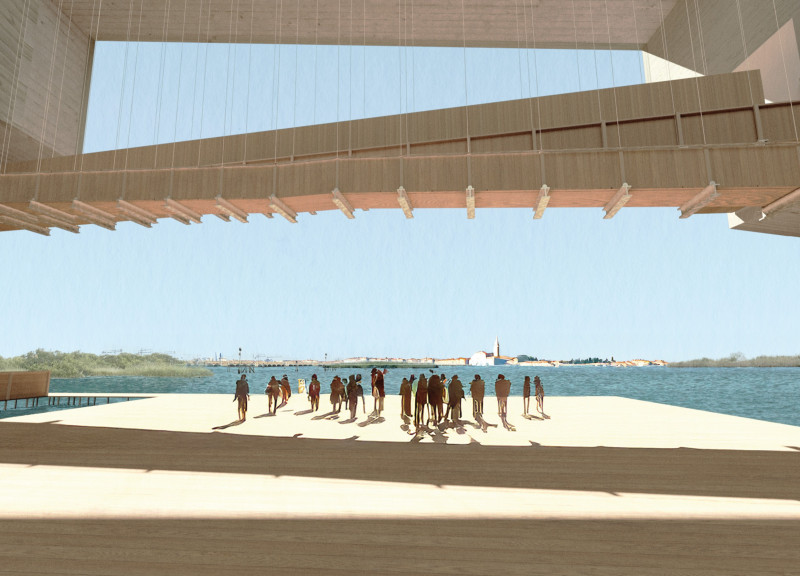5 key facts about this project
At its core, the architecture embodies a contemporary aesthetic that respects its geographical and cultural setting. The project’s layout is inherently functional, designed to facilitate an intuitive flow of movement throughout the space. Distinct zones have been established within the architectural framework, promoting both privacy and community interaction. The arrangement of these spaces not only caters to the practical demands of daily use but also encourages engagement among users.
The facade of the building plays a vital role in its overall presentation. By utilizing a blend of sustainable materials, the design achieves a balance between aesthetic appeal and environmental responsibility. Materials such as reinforced concrete and sustainable timber are utilized effectively to provide structural integrity while promoting thermal efficiency. The incorporation of low-emissivity glass further enhances the building's energy performance, allowing for ample natural light to permeate the interior without compromising on energy conservation.
A significant aspect of this architectural project is its attention to detail. The design incorporates elements such as overhangs and terraces, which serve both functional and aesthetic purposes. These features not only protect the interior spaces from excessive sunlight but also create inviting outdoor areas that foster a connection between internal environments and the landscape. This synergy between outdoor and indoor spaces is indicative of a broader architectural philosophy that seeks to blur the boundaries between nature and the built environment.
Unique design approaches are evident throughout the project. For instance, the architect has employed a systems-based approach to sustainability, integrating green roofs and rainwater harvesting systems into the architectural framework. These elements not only contribute to the ecological footprint of the building but also enhance the functionality of the space by providing opportunities for urban gardening and natural habitat preservation. This forward-thinking approach to design not only sets the project apart but also serves as a model for future architectural endeavors.
The incorporation of community-oriented spaces is another noteworthy feature of the architecture. By providing areas that encourage social interaction and collaboration, the design fosters a sense of community ownership and engagement. Open plazas, versatile meeting areas, and flexible exhibition spaces invite various forms of use, ensuring the building remains a vibrant hub for activities. This attention to communal needs highlights the project’s commitment to enhancing public life within its location.
The architectural plans and sections detail the meticulous thought that has gone into the project's development, charting pathways for effective circulation and access. These illustrated expressions of the design assist in comprehending the intricate relationships among different spaces within the building. Furthermore, the architectural ideas outlined in the project materials serve as a testament to a comprehensive understanding of the site, its potential, and the broader implications of urban development.
As you delve deeper into the specifics of the project presentation, you will find richer insights into its architectural fabric. Exploring the architectural designs and their underlying principles will provide a more nuanced understanding of what makes this project significant within the contemporary architectural discourse. Engaging with the various elements—be it through detailed architectural sections or comprehensive plans—will enhance your appreciation for the thoughtful execution of this architectural vision.























